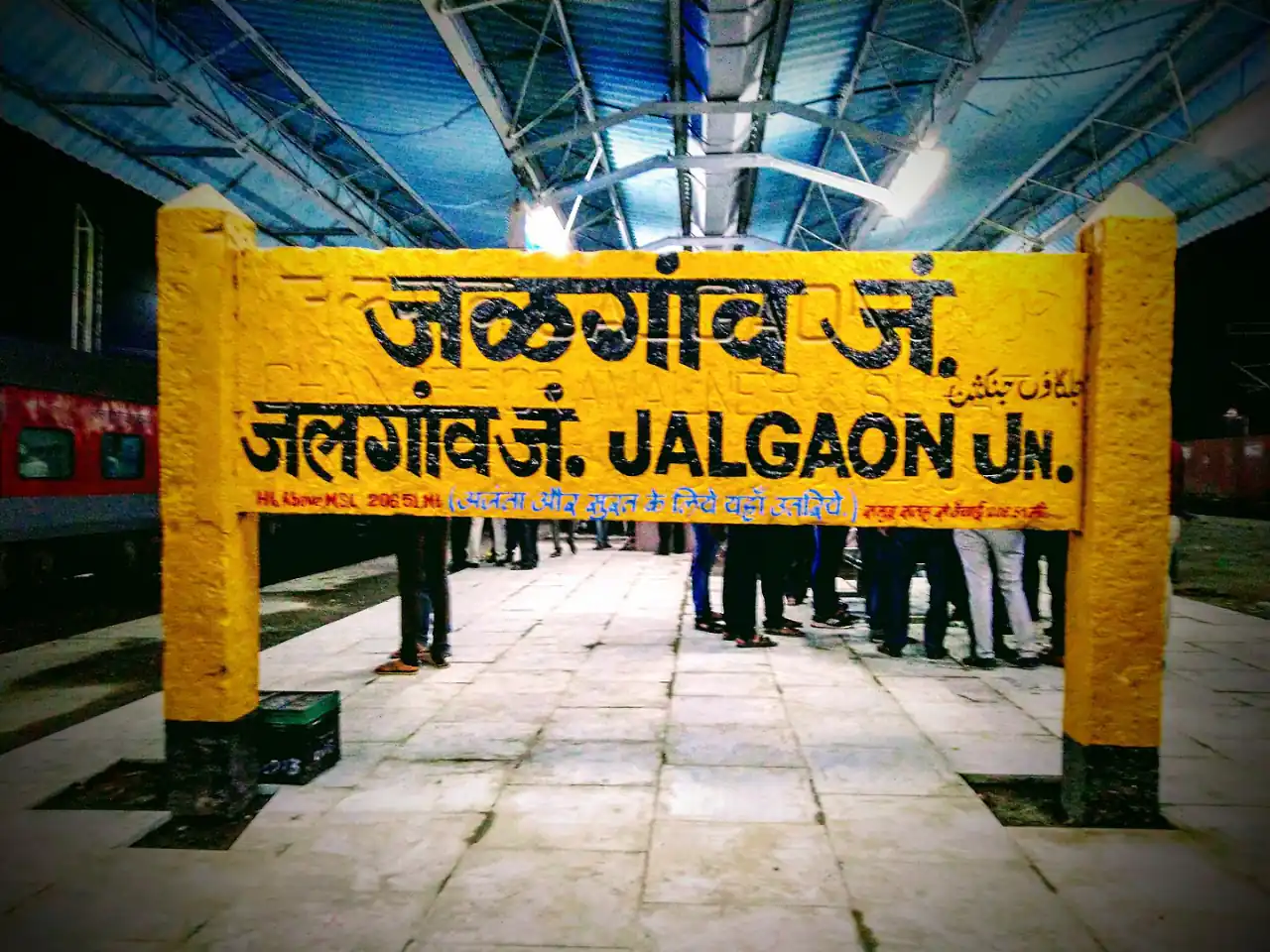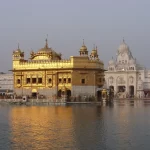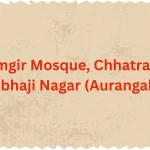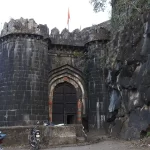Jalgaon: Where History Meets Modernity in Maharashtra’s Banana Capital
Nestled in the fertile plains of North Maharashtra’s Khandesh region, Jalgaon is a city that defies expectations. Known as India’s “Banana Capital” for producing over 60% of Maharashtra’s bananas, this agrarian powerhouse is more than just sprawling orchards. It’s a gateway to UNESCO World Heritage Sites like the Ajanta Caves, a treasure trove of ancient temples, and a living museum of dynastic legacies that span from the Satavahanas to the British Raj. With the Girna River nurturing its soil and a climate that oscillates between scorching summers and misty winters, Jalgaon invites travellers to explore its contrasts—where modernity thrives alongside timeless traditions.
A Tapestry of Time: From Bhaskaracharya to British Railroads
Jalgaon’s history is etched in the annals of Indian greatness. Over 1,000 years ago, it was the birthplace of Bhāskara II, the legendary mathematician-astronomer whose works like Lilavati revolutionised science. The city’s strategic location on ancient trade routes attracted empires: the Yadavas left behind intricately carved temples, the Mughals fortified its lands, and the British transformed it into a cotton and timber hub with the arrival of railways in the 19th century. Today, colonial-era architecture stands shoulder-to-shoulder with bustling markets, whispering tales of resilience and reinvention.
Architectural Alchemy: Hemadpanti Temples and Modern Marvels
Jalgaon’s skyline is a dialogue between eras. The 12th-century Patnadevi Temple, adorned with celestial carvings, showcases the Hemadpanti style—a technique using interlocked stones without mortar. Meanwhile, the Gandhi Teerth, a sprawling museum dedicated to Mahatma Gandhi, blends minimalist design with interactive exhibits, symbolising the city’s embrace of progress. From the sulphur-rich waters of Unapdev Hot Springs to the spiritual aura of Padmalaya’s swayambhu Ganpati idols, Jalgaon’s landmarks are a testament to its architectural and natural diversity.
The Pulse of Progress: Bananas, Drip Irrigation, and Beyond
Beyond its historical allure, Jalgaon is a case study in innovation. The region’s farmers, pioneers of drip irrigation, have turned arid lands into lush banana plantations, earning global acclaim. Companies like Jain Irrigation Systems have put Jalgaon on the map for sustainable agriculture, while its ranking as India’s 19th cleanest city (Category 2) reflects a community committed to eco-conscious growth. Yet, amid factories and universities, the soul of Khandesh lives on in vibrant Ahirani folk songs, bustling Sarafa Bazaar, and festivals like Guru Purnima, where pilgrims gather at the Vyasa Temple to honour ancient sages.
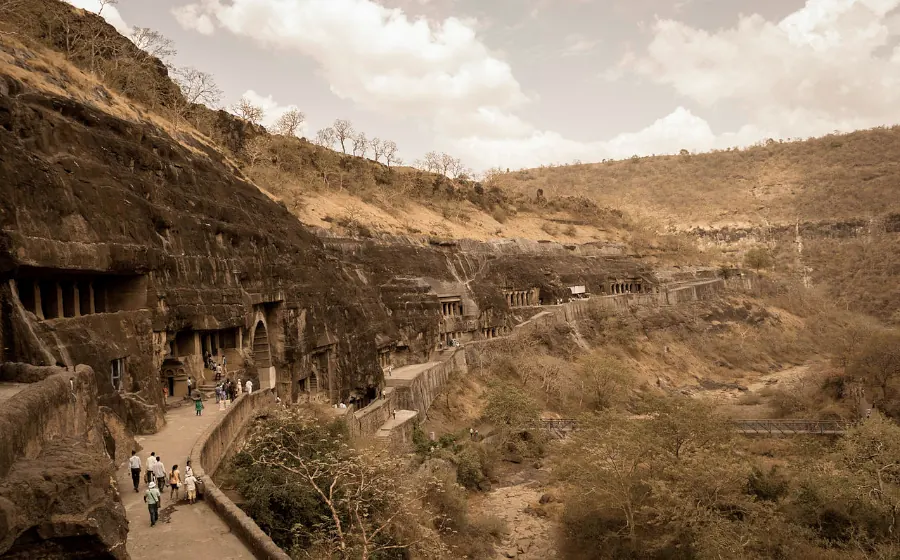
Your Gateway to Adventure and Serenity
Whether you’re a history buff tracing Buddhist caves at Ajanta, a foodie savouring Shev Bhaji in street-side stalls, or a wellness seeker soaking in Unapdev’s therapeutic springs, Jalgaon caters to all. The city’s expanding airport and seamless rail links to Mumbai, Delhi, and Hyderabad make it accessible, while its semi-arid climate—with winters dipping to 10°C—offers year-round exploration. For those willing to wander, Jalgaon reveals hidden gems: the 310-year-old tradition of Muktabai Dindi processions, bamboo weavers crafting intricate baskets, and sunrise views over the Girna River that paint the sky in gold.
What Awaits in This Ultimate Guide
In this deep dive into Jalgaon, we unravel:
1. History Unearthed: Dynastic wars, colonial trade, and Bhaskara’s genius.
2. Architectural Gems: From Hemadpanti marvels to Gandhi’s legacy.
3. Travel Smart: Routes from metros, seasonal tips, and local transport hacks.
4. Culture decoded: Ahirani poetry, banana delicacies, and folk festivals.
5. Beyond the City: Day trips to Ajanta, Lonar Crater, and tribal villages.
Pack your curiosity—Jalgaon is ready to surprise. 🌄
Also Read
Chandwad- History, Spirituality, and Monsoon Magic
1. History of Jalgaon: From Ancient Dynasties to Modern Times
Jalgaon’s history dates back to the Satavahana Empire (230 BCE–220 CE), with later influences from the Yadavas, Mughals, and British. The region thrived as a trade hub due to its proximity to the Girna River.
👉 Bhaskaracharya’s Legacy: The city is the birthplace of Bhāskara II (1114–1185), the mathematician-astronomer who wrote Lilavati, a cornerstone of Indian mathematics.
👉 Colonial Era: Under British rule, Jalgaon became a key cotton and timber trading centre. The railway network, established in the 19th century, boosted its economy.
👉 Post-Independence: Post-1947, Jalgaon emerged as an agricultural powerhouse, pioneering drip irrigation technologies.
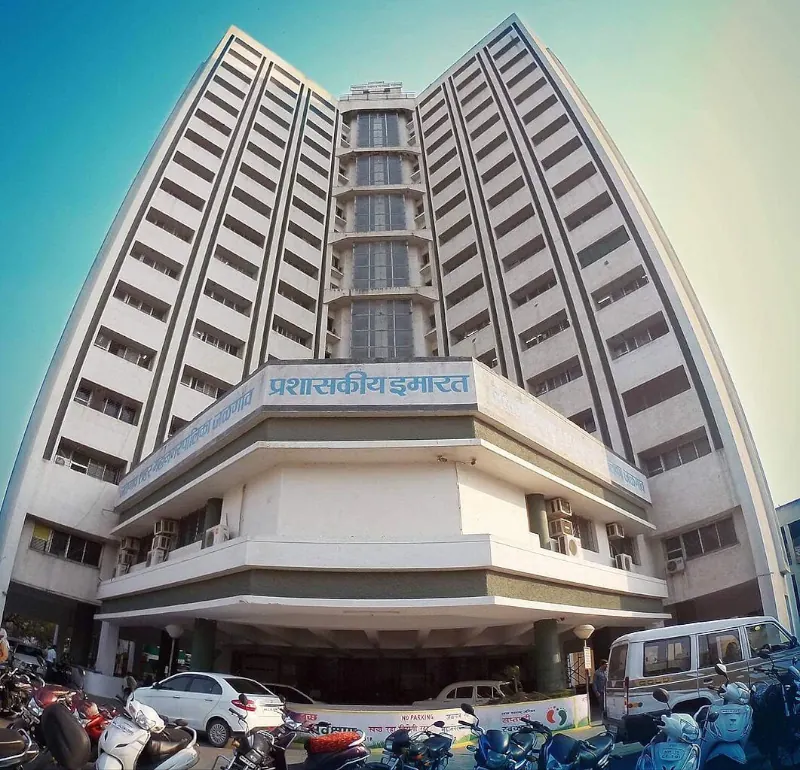
2. Architectural Marvels: Temples, Museums & Colonial Influences
Jalgaon’s architecture blends Hemadpanti style (stone masonry without mortar) with colonial and modern designs.
👉 Patnadevi Temple: Built in 1128 AD by Mandlik Yadav kings, this temple features intricate carvings of Hindu deities.
👉 Mudhai Devi Temple: A 12th-century Hemadpanti structure with a unique shikhara (spire).
👉 Gandhi Teerth: A modern museum dedicated to Mahatma Gandhi, showcasing letters, photos, and interactive exhibits.
3. How to Reach Jalgaon
➨ By Air:
⦿ Jalgaon Airport (JLQ): Flights to Mumbai, Hyderabad, and Goa (Fly91, Alliance Air).
⦿ Nearest International Airport: Chhatrapati Shivaji Maharaj Airport, Mumbai (425 km).
➨ By Train:
⦿ Jalgaon Junction (JL): Direct trains from Delhi (Mumbai Rajdhani), Kolkata, and Chennai.
➨ By Road:
⦿ From Mumbai: NH160 (7 hours).
⦿ From Pune: NH60 (5 hours).
➨ Distances from Major Cities:
⦿ Delhi: 1,150 km
⦿ Mumbai: 425 km
⦿ Hyderabad: 575 km
⦿ Ahmedabad: 440 km
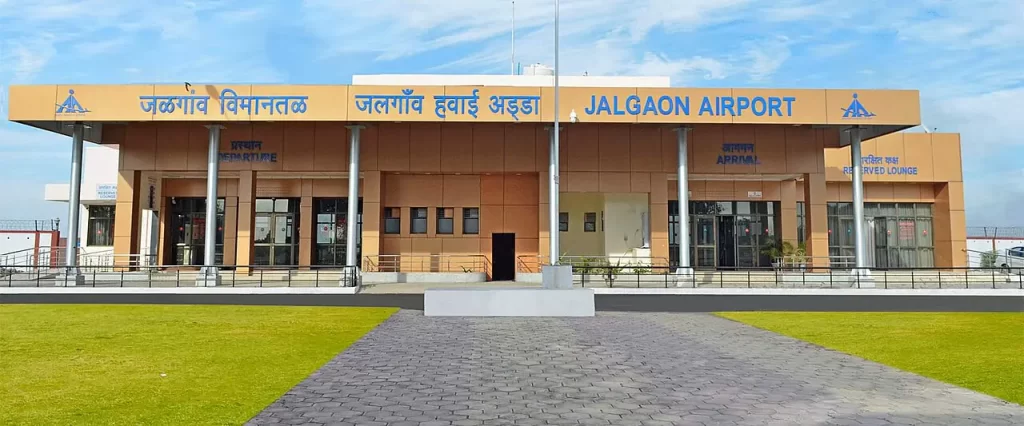
4. Best Places to Visit
👉 Ajanta Caves (76 km): UNESCO site with Buddhist rock-cut caves.
👉 Unapdev Hot Springs: Natural sulphur springs surrounded by forests.
👉 Padmalaya Temple: One of India’s 3.5 sacred Ganpati shrines.
👉 Saint Muktabai Temple: A key stop on the Pandharpur pilgrimage.
➤ Nearby Attractions:
⦿ Lonar Crater Lake (200 km)
⦿ Fardapur Waterfalls (50 km)
5. Climate & Best Time to Visit
⦿ Summer (March–June): Scorching (up to 48°C). Avoid outdoor activities.
⦿ Monsoon (July–September): Moderate rainfall (690 mm annually). Lush greenery.
⦿ Winter (October–February): Pleasant (10–28°C). Ideal for sightseeing.
6. Local Culture: Food, Festivals & Handicrafts
⦿ Food: Try Shev Bhaji (Fried Snacks in Gravy) and Banana Papad.
⦿ Festivals: Guru Purnima at Vyasa Temple, Khandesh Festival.
⦿ Handicrafts: Bamboo baskets, Banjara embroidery.
➨ Local Markets: Sarafa Bazaar for spices, Mangalya Market for textiles.
Jalgaon: Where Bananas Bloom, History Whispers, and Culture Thrives
7. Economy & Demographics of Jalgaon District (As of 2025 Projections)
➤ Economy
Jalgaon’s economy is a blend of agriculture, industry, and services, with ambitious growth targets under the leadership of IAS Ayush Prasad, who aims to transform it into a $25 billion economy by 2029 (up from $10 billion in 2025) through sustainable development and innovation.
A. Agriculture
👉 Banana Production: Known as India’s “Banana Capital”, Jalgaon produces 60% of Maharashtra’s bananas and exports to Europe and the U.S. Challenges include reducing pesticide residues and stabilising year-round output.
👉 Cotton & Food Processing: Despite low cotton yields compared to national averages, Jalgaon is reviving its legacy in pulses and edible oil processing. 8 major irrigation projects and 2,000 farm ponds have been built to boost productivity.
👉 Drip Irrigation: Pioneered by Jain Irrigation Systems, the district leads in sustainable farming, contributing to its global agricultural reputation.
B. Industry
👉 Plastic Recycling: Over 400 plastic recycling units employ thousands, with efforts to reduce GST on recycled materials and improve effluent treatment.
👉 Steel & Railways: Leveraging scrap from Bhusawal Railway Yard, Jalgaon is developing a steel material recovery facility for railway and automobile spare parts.
👉 Renewable Energy: Expansion of thermal and solar power plants ensures reliable energy for industries.
C. Services & Tourism
👉 Ajanta Caves Proximity: Jalgaon serves as a gateway to the UNESCO World Heritage Site, driving tourism revenue.
👉 Food Processing Hubs: Focus on banana-based products and intercropping to diversify income streams.
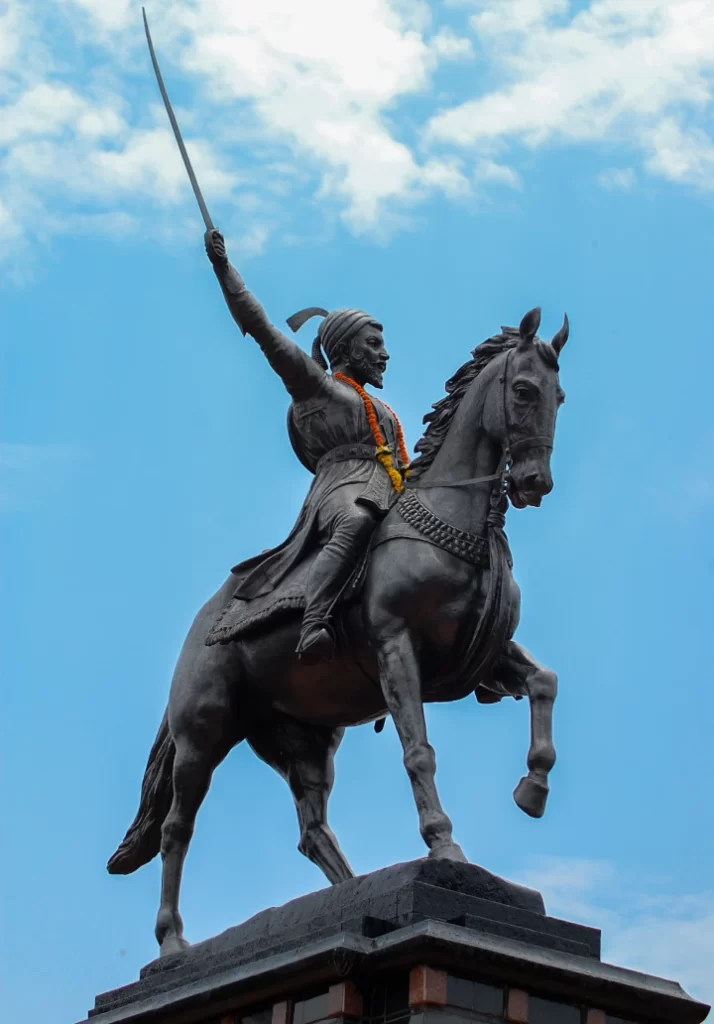
➨ Demographics
A. Population
⦿ 2025 Projection: ~4.7 million (up from 4.23 million in 2011).
⦿ Urban vs. Rural: 31.74% urban (1.34 million) and 68.26% rural (2.89 million).
➤ Key Cities:
⦿ Jalgaon (Municipal Corporation): Population ~670,000 (2025).
⦿ Bhusawal: ~208,318 (2025).
B. Gender & Literacy
⦿ Sex Ratio: 925 females per 1,000 males (below national average of 943).
⦿ Child Sex Ratio: 842 girls per 1,000 boys, highlighting gender disparities.
⦿ Literacy Rate: 78.2% (male: 85.36%, female: 70.56%).
C. Religious Composition
⦿ Hindu: 81.74% (3.84 million in 2025).
⦿ Muslim: 13.25% (622,730).
⦿ Buddhist: 3.4% (159,906).
⦿ Others: Christians, Sikhs, Jains (~1-2% combined).
D. Employment
👉 Workforce: 148,035 engaged in work (92.43% in main occupations like farming and manufacturing).
👉 Challenges: Low female workforce participation (26,004 females employed vs. 122,031 males).
➨ Key Challenges & Initiatives
👉 Economic: Bridging the gap in cotton yields, improving irrigation, and reducing urban-rural literacy gaps.
👉 Demographic: Addressing low child sex ratios and enhancing female literacy through policy interventions.
👉 Sustainability: Promoting organic farming and renewable energy to meet global export standards.
8. Travel Tips & Itineraries
➤ 5-Day Itinerary:
👉 Day 1: Gandhi Teerth + Local Temples
👉 Day 2: Ajanta Caves
👉 Day 3: Unapdev Springs
👉 Day 4: Rural Farm Tours
👉 Day 5: Shopping & Departure
➤ Pack: Light cotton clothes, sunscreen, reusable water bottle.
9. FAQs
What is Jalgaon famous for?
Bananas, Ajanta Caves access, and Bhaskaracharya’s birthplace.
Is Jalgaon safe for solo travellers?
Yes, but avoid remote areas at night.
Best local dishes to try?
Vangyacha Bharit, Chival Che Phunake, Daal Gandori, Varan Batti, Patodi Bhaji, Shev Bhaaji, Paakwan (fried flatbread with chutney).
10. Conclusion
Jalgaon is a treasure trove of history, spirituality, and agrarian innovation. From its ancient temples to bustling markets, the city offers a slice of Maharashtra rarely seen by tourists.
Jalgaon’s economy is poised for transformative growth, driven by agricultural innovation and industrial diversification. However, demographic challenges like gender inequality and literacy gaps require targeted efforts. With strategic initiatives under the 31-point agenda led by IAS Ayush Prasad, the district aims to balance economic ambition with inclusive development .
“Ready to explore Jalgaon? Book your trip today and dive into the heart of Khandesh!”
➤ Sources:
⦿ Jalgaon District Official Website
⦿ TripAdvisor – Jalgaon Attractions
➤ Image Credit
⦿ Wikimedia Commons (Jalgaon Municipal Corporation)
⦿ Wikipedia (Jalgaon Junction Railway Station)
⦿ Wikimedia Commons (Ajanta Caves Landscape)
⦿ Wikimedia Commons (Statue of Chhatrapati Shivaji Maharaj)
For more information, you can visit our website: ExploreXP
- Arrah, Bihar: A Comprehensive Travel and Cultural Guide
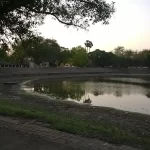
- Aranya Devi Temple – Arrah, Bihar: Where Mythology Meets Modern Devotion

- Anjaneri Hill – Nashik, Maharashtra: Where Myth Meets Majesty
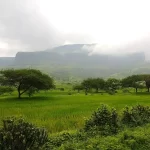
- Anand Sagar, Shegaon, Maharashtra – A Spiritual Oasis Blending Serenity & Adventure
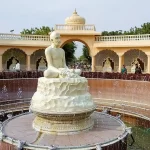
- Aga Khan Palace – Pune’s Monument of Freedom and Legacy
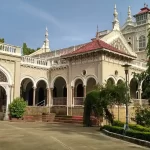
- Attari Sham Singh Railway Station – A Historic Gateway to Punjab’s Heritage

